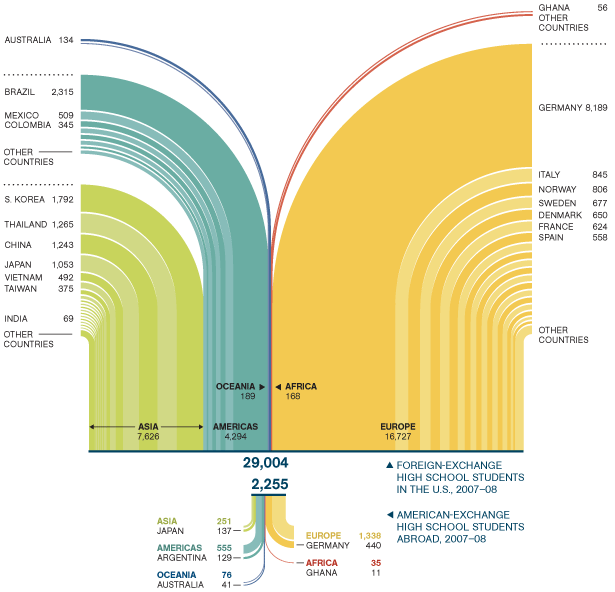The past three decades have seen an astounding evolution of computers and communications technology. This so-called digital age has been built on a steady stream of new and more powerful devices and gadgets. But how people use these items and what they demand from these technologies has evolved at an equally remarkable rate. For example, third-generation or "3G" cell phone networks, already standard in Japan and South Korea and growing in Europe, turn a simple conversation aid into a Web-surfing, videoconferencing, music-and-video-streaming broadband data hub.
The "World Wide Web" is also morphing into its next generation—Web 2.0. That means more user-generated content: blogs and video-sharing sites, collaborative projects such as Wikipedia, and the mushrooming social networking sites can offer as little as a venue for flirting or as much as a powerful new way to organize the chaos of the Internet.
The Internet has become critical infrastructure for recreation, business, and even democracy. But it has also proved a breeding ground for fraud and a target of censorship. And while 70 percent of the U.S. population has Internet access, only 4 percent of Africans and 10 percent of Asians are online. New bridges across this digital divide are essential if the Web is to truly become worldwide. (Source: National Geographic Wild)
The "World Wide Web" is also morphing into its next generation—Web 2.0. That means more user-generated content: blogs and video-sharing sites, collaborative projects such as Wikipedia, and the mushrooming social networking sites can offer as little as a venue for flirting or as much as a powerful new way to organize the chaos of the Internet.
The Internet has become critical infrastructure for recreation, business, and even democracy. But it has also proved a breeding ground for fraud and a target of censorship. And while 70 percent of the U.S. population has Internet access, only 4 percent of Africans and 10 percent of Asians are online. New bridges across this digital divide are essential if the Web is to truly become worldwide. (Source: National Geographic Wild)
Cast
Latest news
There are no news items yet
Crew
Warning: World Wide Web guide may contain spoilers
Classification: Documentary
Genre: Educational | Family
Status: New Series
Network: NAT GEO WILD ( USA)
USA)
Airs: Saturdays at 07:00 pm
Runtime: 30 Minutes
Premiere: January 21, 2012
Episode Order: 5
Genre: Educational | Family
Status: New Series
Network: NAT GEO WILD (
Airs: Saturdays at 07:00 pm
Runtime: 30 Minutes
Premiere: January 21, 2012
Episode Order: 5
Partners
There currently is no editor for this guide..
Click here to apply if you want to be the editor
Click here to apply if you want to be the editor


